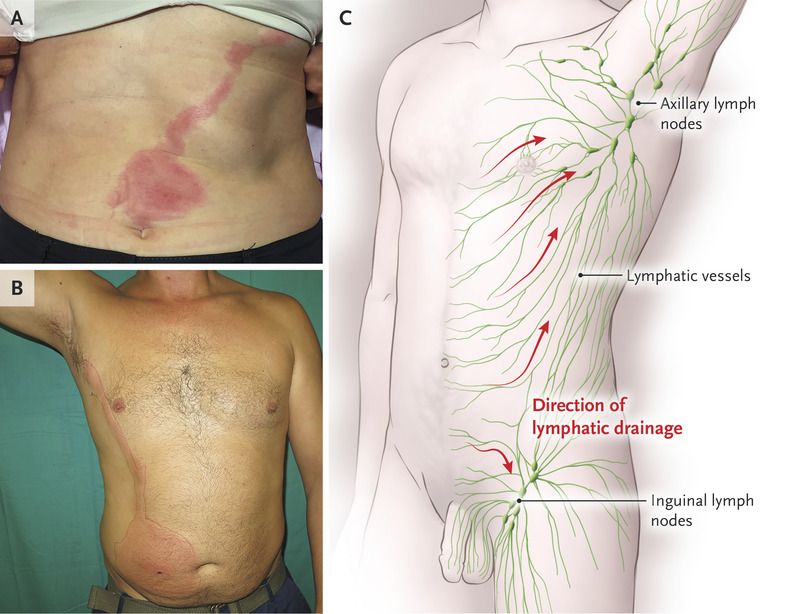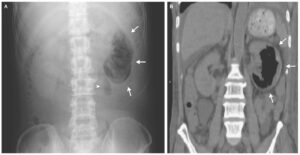This article is an answer to the Case – Erythematous and Tender Abdominal Lesion
A 52-year-old woman presented with an erythematous and tender abdominal lesion; examination revealed a warm, indurated plaque with extension toward her left breast (Panel A).
A 43-year-old man presented with a similar tender abdominal lesion; on examination, an erythematous, warm plaque with small central erosion was noted, with extension of the plaque toward the right axilla (Panel B).
Both patients had previously been healthy, without a history of cancer or immunodeficiency. Neither recalled a recent insect bite or reported fevers or systemic symptoms. In both patients, laboratory testing revealed leukocytosis with a predominance of neutrophils. A clinical diagnosis of cellulitis with lymphangitis was made.
Lymphangitis is commonly caused by a bacterial infection that begins with an inoculation of bacteria through the skin. Similar clinical presentations can be seen with nodular lymphangitis (caused by organisms such as Sporothrix schenckii and nocardia species), neoplastic lymphangitis, or an exaggerated response to an arthropod bite, especially in patients with immunodeficiency or cancer.
A schematic diagram of abdominal-wall lymphatic drainage is shown in Panel C.
Both patients were treated empirically with oral antibiotics and nonsteroidal antiinflammatory drugs for lymphangitis associated with a presumed bacterial infection. Within a week, the lesions in both patients had resolved completely, without scarring.



